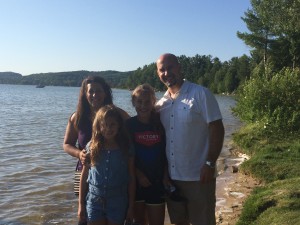Week of October 12-16
Kindergarten
Content Objective: I can demonstrate comprehension of the sense of hearing by predicting sounds of various objects and words to describe the sound (loud, soft, high, low, quiet, silent)
Language Objective: I can orally explain the sounds I heard using sound words.
Sentence stem :
I hear a ______________ sound with my ears. It is a ____________.
Vocabulary: senses, ears, sound, hear, loud, soft, silent, quiet high pitch, low pitch
S.IA.00.12 Share ideas about the senses through purposeful conversation.
First Grade
Content Objective: I can demonstrate comprehension of the properties of magnetic or non-magnetic objects by experimenting with magnets and various objects to observe which attract and which repel.
Language Objective: I can draw to explain at least 3 objects that had the magnetic property
Vocabulary: sort, observable, properties, magnetic, attract, repel, poles, North, South
P.PM.E.3 Magnets can repel or attract other magnets. Magnets can also attract magnetic objects. Magnets can attract and repel at a distance.
P.PM.01.31 Identify materials that are attracted by magnets.
P.PM.01.32 Observe that like poles of a magnet repel and unlike poles of a magnet attract.
Second Grade
Content Objective: I can demonstrate comprehension of the property of solids by measuring various objects using a ruler (cm) and meter stick(m) to classify the objects by their size.
Language Objective: I can write to compare the sizes of the various objects I measured.
Vocabulary: classify, compare, properties, attributes, shape, size, texture, color, hardness, floating, sinking, liquid, solid
P.PM.E.1Physical Properties- All objects and substances have physical properties that can be measured.
P.PM.02.12 Describe objects and substances according to their properties (color, size, shape, texture, hardness, liquid or solid, sinking or floating)
P.PM.02.13 Measure the length of objects using rulers (cm)and meter sticks(m).
Third Grade… Continuation of last weeks lesson(2 session activity)
Content Objective: I can demonstrate comprehension of how weight and the strength of force can affect an object’s motion by predicting if a lighter or heavier ball will travel farther when a soft or hard force is applied.
Language Objective: I can write to explain how the amount of force and weight affected each ball’s motion and distance traveled.
Vocabulary: hypothesis , prediction, results, conclusion, force, motion, push, pull, lighter, heavier, weight, force strength, measuring tapes, meter stick, meters, centimeters
P.FM.03.35 Describe how a push or a pull is a force.
P.FM.03.37 Demonstrate how the change in motion of an object is related to the strength of the force acting on it.
S.IP.03.14 Manipulate simple tools that aid observation and data collection (measuring tape or meter stick)
Fourth Grade
Content Objective: I can demonstrate application of electrical energy and how it works by constructing a simple circuit and distinguishing between a closed and open circuit.
Language Objectives: I can draw and label how a simple circuit works and explain what energy was transformed.
Include: Path (wires-arrows to show electron flow) power/energy source (battery), and the load (light bulb)
Vocabulary: energy, electrical, transfer, transform, simple circuit, atoms, neutrons, protons, electrons, open circuit, closed circuit, power source (battery), wire (path), load (bulb)
P.EN.04.12 Identify heat and electricity as forms of energy
P.EN.E.51 Demonstrate how electrical energy is transferred and changed through the use of a simple circuit.
Fifth Grade
Content Objective: I can demonstrate comprehension of Newton’s First Law of Motion(Inertia) by exploring various activities (Egg trick, 10 Quarter stack, and car with penny) that demonstrate the Law.
Language Objective: I can write to explain how one of the activities performed today was an example of Newton’s First Law.
Sentence Stem:
The _____________ activity was an example of Newton’s First Law of Motion.
This activity showed Newton’s First law by _______________________.
Vocabulary: contact and non-contact forces, motion, force, inertia, Newton’s First Law of Motion, balanced force, unbalanced force, push, pull, gravitational force, relative position
P.FM.M.3 Forces have magnitude and direction. Forces can be added. The net force of an object is the sum of all the forces acting on the object. The speed or direction of the motion of the object changes when a non-zero net force is applied to it. A balanced force on an object does not change the motion of an object (the object either remains at rest or continues to move at a constant speed in a straight line)
P.FM.05.22 Demonstrate contact and non-contact forces to change motion of an object.
![IMG_2225[1]](https://iblog.dearbornschools.org/gruczl/wp-content/uploads/sites/1011/2015/10/IMG_22251-300x225.jpg)
![IMG_2224[1]](https://iblog.dearbornschools.org/gruczl/wp-content/uploads/sites/1011/2015/10/IMG_22241-300x225.jpg)
![IMG_2221[1]](https://iblog.dearbornschools.org/gruczl/wp-content/uploads/sites/1011/2015/10/IMG_22211-300x225.jpg)
![IMG_2219[1]](https://iblog.dearbornschools.org/gruczl/wp-content/uploads/sites/1011/2015/10/IMG_22191-300x225.jpg)
![IMG_2243[1]](https://iblog.dearbornschools.org/gruczl/wp-content/uploads/sites/1011/2015/10/IMG_22431-300x225.jpg)
![IMG_2245[1]](https://iblog.dearbornschools.org/gruczl/wp-content/uploads/sites/1011/2015/10/IMG_22451-300x225.jpg)
![IMG_2250[1]](https://iblog.dearbornschools.org/gruczl/wp-content/uploads/sites/1011/2015/10/IMG_22501-300x225.jpg)
![IMG_2253[1]](https://iblog.dearbornschools.org/gruczl/wp-content/uploads/sites/1011/2015/10/IMG_22531-300x225.jpg)
![IMG_2254[1]](https://iblog.dearbornschools.org/gruczl/wp-content/uploads/sites/1011/2015/10/IMG_22541-300x225.jpg)
![IMG_2256[1]](https://iblog.dearbornschools.org/gruczl/wp-content/uploads/sites/1011/2015/10/IMG_22561-300x225.jpg)
![IMG_2257[1]](https://iblog.dearbornschools.org/gruczl/wp-content/uploads/sites/1011/2015/10/IMG_22571-300x225.jpg)
![IMG_2266[1]](https://iblog.dearbornschools.org/gruczl/wp-content/uploads/sites/1011/2015/10/IMG_22661-300x225.jpg)
![IMG_2264[1]](https://iblog.dearbornschools.org/gruczl/wp-content/uploads/sites/1011/2015/10/IMG_22641-300x225.jpg)
![IMG_2267[1]](https://iblog.dearbornschools.org/gruczl/wp-content/uploads/sites/1011/2015/10/IMG_22671-300x225.jpg)
![IMG_2265[1]](https://iblog.dearbornschools.org/gruczl/wp-content/uploads/sites/1011/2015/10/IMG_22651-300x225.jpg)
![IMG_2271[1]](https://iblog.dearbornschools.org/gruczl/wp-content/uploads/sites/1011/2015/10/IMG_22711-300x225.jpg)
![IMG_2270[1]](https://iblog.dearbornschools.org/gruczl/wp-content/uploads/sites/1011/2015/10/IMG_22701-300x225.jpg)
![IMG_2268[1]](https://iblog.dearbornschools.org/gruczl/wp-content/uploads/sites/1011/2015/10/IMG_22681-300x225.jpg)
![IMG_2235[1]](https://iblog.dearbornschools.org/gruczl/wp-content/uploads/sites/1011/2015/10/IMG_22351-300x225.jpg)
![IMG_2237[1]](https://iblog.dearbornschools.org/gruczl/wp-content/uploads/sites/1011/2015/10/IMG_22371-300x225.jpg)
![IMG_2240[1]](https://iblog.dearbornschools.org/gruczl/wp-content/uploads/sites/1011/2015/10/IMG_22401-300x225.jpg)
![IMG_2238[1]](https://iblog.dearbornschools.org/gruczl/wp-content/uploads/sites/1011/2015/10/IMG_22381-300x225.jpg)
![IMG_2232[1]](https://iblog.dearbornschools.org/gruczl/wp-content/uploads/sites/1011/2015/10/IMG_22321-300x225.jpg)
![IMG_2231[1]](https://iblog.dearbornschools.org/gruczl/wp-content/uploads/sites/1011/2015/10/IMG_22311-300x225.jpg)
![IMG_2165[1]](https://iblog.dearbornschools.org/gruczl/wp-content/uploads/sites/1011/2015/10/IMG_21651-300x225.jpg)
![IMG_2169[1]](https://iblog.dearbornschools.org/gruczl/wp-content/uploads/sites/1011/2015/10/IMG_21691-300x225.jpg)
![IMG_2166[1]](https://iblog.dearbornschools.org/gruczl/wp-content/uploads/sites/1011/2015/10/IMG_21661-300x225.jpg)
![IMG_2170[1]](https://iblog.dearbornschools.org/gruczl/wp-content/uploads/sites/1011/2015/10/IMG_21701-300x225.jpg)
![IMG_2173[1]](https://iblog.dearbornschools.org/gruczl/wp-content/uploads/sites/1011/2015/10/IMG_21731-300x225.jpg)
![IMG_2177[1]](https://iblog.dearbornschools.org/gruczl/wp-content/uploads/sites/1011/2015/10/IMG_21771-300x225.jpg)
![IMG_2175[1]](https://iblog.dearbornschools.org/gruczl/wp-content/uploads/sites/1011/2015/10/IMG_21751-300x225.jpg)
![IMG_2178[1]](https://iblog.dearbornschools.org/gruczl/wp-content/uploads/sites/1011/2015/10/IMG_21781-300x225.jpg)
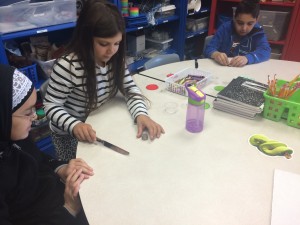
![IMG_2217[1]](https://iblog.dearbornschools.org/gruczl/wp-content/uploads/sites/1011/2015/10/IMG_22171-300x225.jpg)
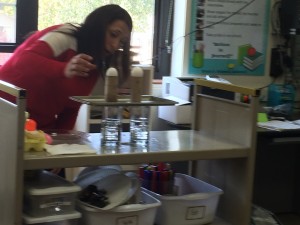
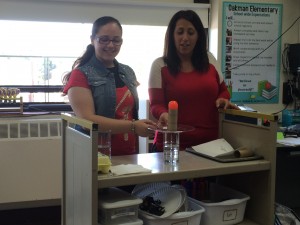
![IMG_2214[1]](https://iblog.dearbornschools.org/gruczl/wp-content/uploads/sites/1011/2015/10/IMG_22141-300x225.jpg)
![IMG_2124[1]](https://iblog.dearbornschools.org/gruczl/wp-content/uploads/sites/1011/2015/10/IMG_21241-300x225.jpg)
![IMG_2120[1]](https://iblog.dearbornschools.org/gruczl/wp-content/uploads/sites/1011/2015/10/IMG_21201-300x225.jpg)
![IMG_2123[1]](https://iblog.dearbornschools.org/gruczl/wp-content/uploads/sites/1011/2015/10/IMG_21231-300x225.jpg)
![IMG_2145[1]](https://iblog.dearbornschools.org/gruczl/wp-content/uploads/sites/1011/2015/10/IMG_21451-300x225.jpg)
![IMG_2146[1]](https://iblog.dearbornschools.org/gruczl/wp-content/uploads/sites/1011/2015/10/IMG_21461-300x225.jpg)
![IMG_2147[1]](https://iblog.dearbornschools.org/gruczl/wp-content/uploads/sites/1011/2015/10/IMG_21471-300x225.jpg)
![IMG_2140[1]](https://iblog.dearbornschools.org/gruczl/wp-content/uploads/sites/1011/2015/10/IMG_21401-300x225.jpg)
![IMG_2131[1]](https://iblog.dearbornschools.org/gruczl/wp-content/uploads/sites/1011/2015/10/IMG_21311-300x225.jpg)
![IMG_2135[1]](https://iblog.dearbornschools.org/gruczl/wp-content/uploads/sites/1011/2015/10/IMG_21351-300x225.jpg)
![IMG_2139[1]](https://iblog.dearbornschools.org/gruczl/wp-content/uploads/sites/1011/2015/10/IMG_21391-300x225.jpg)
![IMG_2138[1]](https://iblog.dearbornschools.org/gruczl/wp-content/uploads/sites/1011/2015/10/IMG_21381-300x225.jpg)
![IMG_2125[1]](https://iblog.dearbornschools.org/gruczl/wp-content/uploads/sites/1011/2015/10/IMG_21251-300x225.jpg)
![IMG_2103[1]](https://iblog.dearbornschools.org/gruczl/wp-content/uploads/sites/1011/2015/10/IMG_21031-300x225.jpg)
![IMG_2099[1]](https://iblog.dearbornschools.org/gruczl/wp-content/uploads/sites/1011/2015/10/IMG_20991-300x300.jpg)
![IMG_2097[1]](https://iblog.dearbornschools.org/gruczl/wp-content/uploads/sites/1011/2015/10/IMG_20971-300x225.jpg)
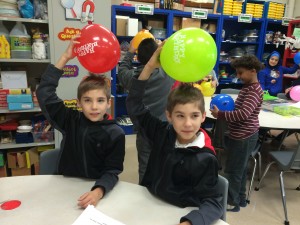
![IMG_2091[1]](https://iblog.dearbornschools.org/gruczl/wp-content/uploads/sites/1011/2015/10/IMG_20911-e1444227716632-300x225.jpg)
![IMG_2095[2]](https://iblog.dearbornschools.org/gruczl/wp-content/uploads/sites/1011/2015/10/IMG_20952-300x225.jpg)

![IMG_2089[1]](https://iblog.dearbornschools.org/gruczl/wp-content/uploads/sites/1011/2015/10/IMG_20891-e1444227595632-300x225.jpg)
![IMG_2118[1]](https://iblog.dearbornschools.org/gruczl/wp-content/uploads/sites/1011/2015/10/IMG_21181-300x225.jpg)
![IMG_2115[1]](https://iblog.dearbornschools.org/gruczl/wp-content/uploads/sites/1011/2015/10/IMG_21151-300x225.jpg)
![IMG_2109[1]](https://iblog.dearbornschools.org/gruczl/wp-content/uploads/sites/1011/2015/10/IMG_21091-300x225.jpg)
![IMG_2113[1]](https://iblog.dearbornschools.org/gruczl/wp-content/uploads/sites/1011/2015/10/IMG_21131-300x225.jpg)
![IMG_2129[1]](https://iblog.dearbornschools.org/gruczl/wp-content/uploads/sites/1011/2015/10/IMG_21291-300x225.jpg)
![IMG_1947[1]](https://iblog.dearbornschools.org/gruczl/wp-content/uploads/sites/1011/2015/09/IMG_19471-300x225.jpg)
![IMG_1946[1]](https://iblog.dearbornschools.org/gruczl/wp-content/uploads/sites/1011/2015/09/IMG_19461-300x225.jpg)
![IMG_1938[1]](https://iblog.dearbornschools.org/gruczl/wp-content/uploads/sites/1011/2015/09/IMG_19381-300x225.jpg)
![IMG_1940[1]](https://iblog.dearbornschools.org/gruczl/wp-content/uploads/sites/1011/2015/09/IMG_19401-300x225.jpg)
![IMG_1929[1]](https://iblog.dearbornschools.org/gruczl/wp-content/uploads/sites/1011/2015/09/IMG_19291-300x225.jpg)
![IMG_1922[1]](https://iblog.dearbornschools.org/gruczl/wp-content/uploads/sites/1011/2015/09/IMG_19221-300x225.jpg)
![IMG_1928[1]](https://iblog.dearbornschools.org/gruczl/wp-content/uploads/sites/1011/2015/09/IMG_19281-300x225.jpg)
![IMG_1926[1]](https://iblog.dearbornschools.org/gruczl/wp-content/uploads/sites/1011/2015/09/IMG_19261-300x225.jpg)
